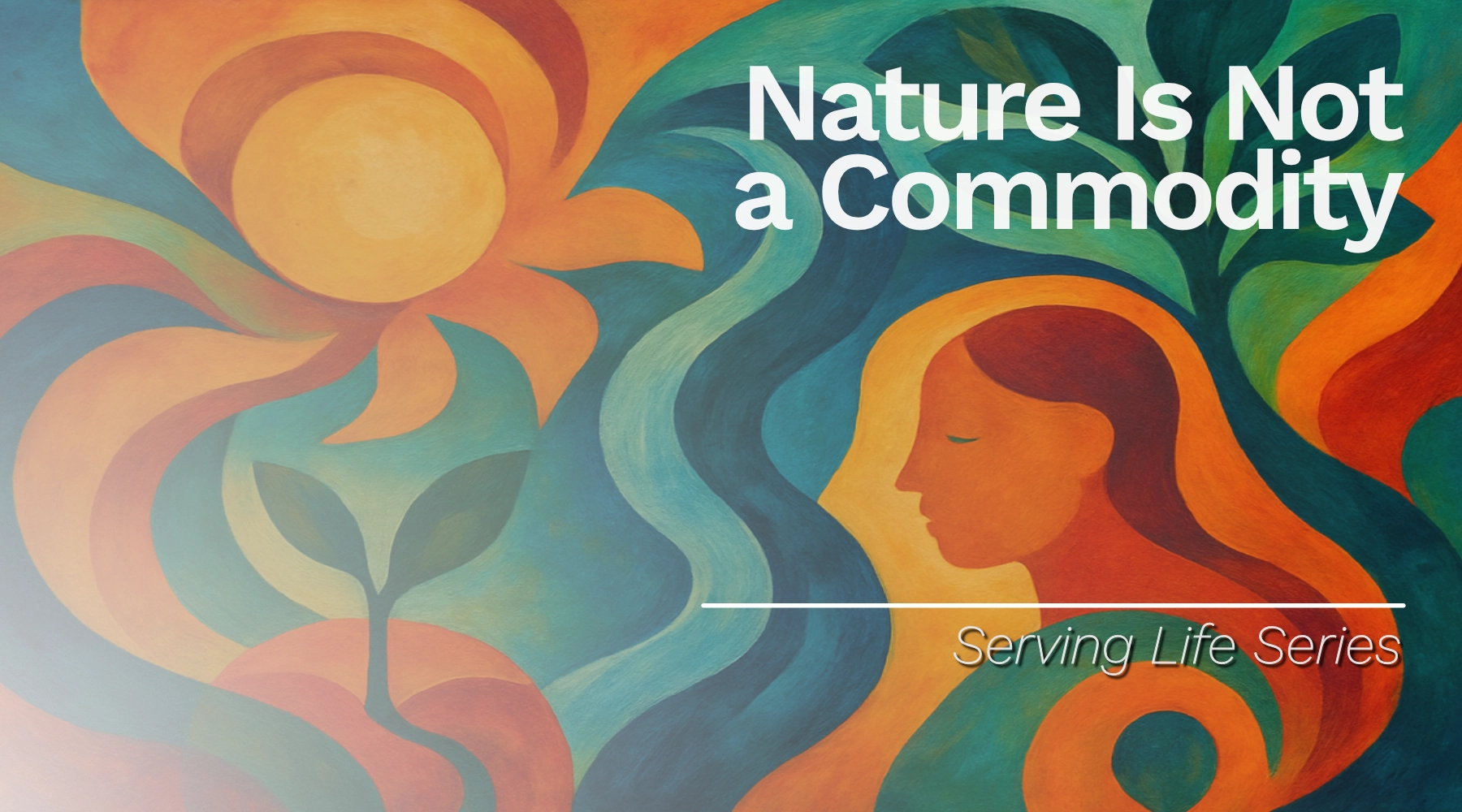Blog

In the first article of this series, we saw how life as a whole has been flipped into “resource.” In the second, we traced how that same distortion turns back on ourselves, recasting people as “human resources” and “capital.” This third part follows the same arc outward: just as people are reframed as capital, the living world is reduced to commodities.
A forest becomes “board feet of lumber.”
A river becomes “water rights.”
An ecosystem becomes “services” to be priced.
“The rainforest is worth X billion in timber.”
“This wetland offsets Y tons of carbon.”
“Fisheries generate Z dollars annually.”
Such phrases sound pragmatic, even scientific. But each one translates living systems into economic fragments — life abstracted into markets.
Through the Story Lens, the translation seems natural. A price tag makes forests legible to accountants, water tradable to investors, and ecosystems comparable against costs. The living world is recast as standing stock — waiting to be measured, offset, and extracted.
But in that conversion, something vital vanishes: the recognition that forests breathe for us, rivers flow through us, and ecosystems hold the conditions for our very survival.
Through the Life Lens, forests are not inventories but intricate webs of reciprocity. Rivers are not water rights to allocate but flowing kin, shaping the land and nourishing all who live along their banks. Ecosystems are not “services” to be priced but living grounds we are woven into — the life that sustains and teaches us, if we listen.
To see so-called nature as commodities is to cut the threads of belonging. And when those threads are cut, it is no wonder we feel lonely, disconnected, and disengaged. The fragmentation of life outside us echoes inside us.
To see it as life, instead, is to remember we are part of the weave — bound into relationships that hold us, sustain us, and call us back into participation.
The dissonance you feel when hearing forests described in “board feet” or rivers in “acre-feet” is not confusion — it is life resisting being flattened into inventory. Real change begins when we redesign the choices that keep that language/framing in place:
Each redesign choice flips the lens back — from ecosystems as commodities to ecosystems as kin.
As long as forests are counted in board feet and rivers in acre-feet, we will keep stripping life into units we trade. But another story is waiting: one where ecosystems are not standing stocks of value but living grounds of survival and meaning.
The choice is stark: continue treating nature as a storehouse for extraction, or remember ourselves as part of a living weave to be tended. The story we live by will decide whether life flourishes or frays.
First, we saw how life as a whole is flipped into “resource.” Then we turned inward, where people themselves became “human capital.” Now we’ve looked outward, where the living world is reduced to commodities. Each step fragments life into parts to be managed.
But naming the distortion is only a beginning. Flipping the lens — in our language, in our assumptions, in our defaults — is what allows us to see differently, to feel differently, to decide differently. Action flows from there.
That shift is not abstract. It shows up in practice: the words we choose, the measures we track, the structures we design. Flip the frame in conversation. Call out when life is reduced to capital or commodity. Redesign one choice so life, not story, is the root.
That is the work of returning to the weave. And that is what it means to be radical.
Part 1 of the Serving Life Series ends here: with the recognition that life has been flipped into resource, capital, and commodity. Part 2 begins with a deeper question — how did we get here, and why do we cling so tightly to the Story Lens?